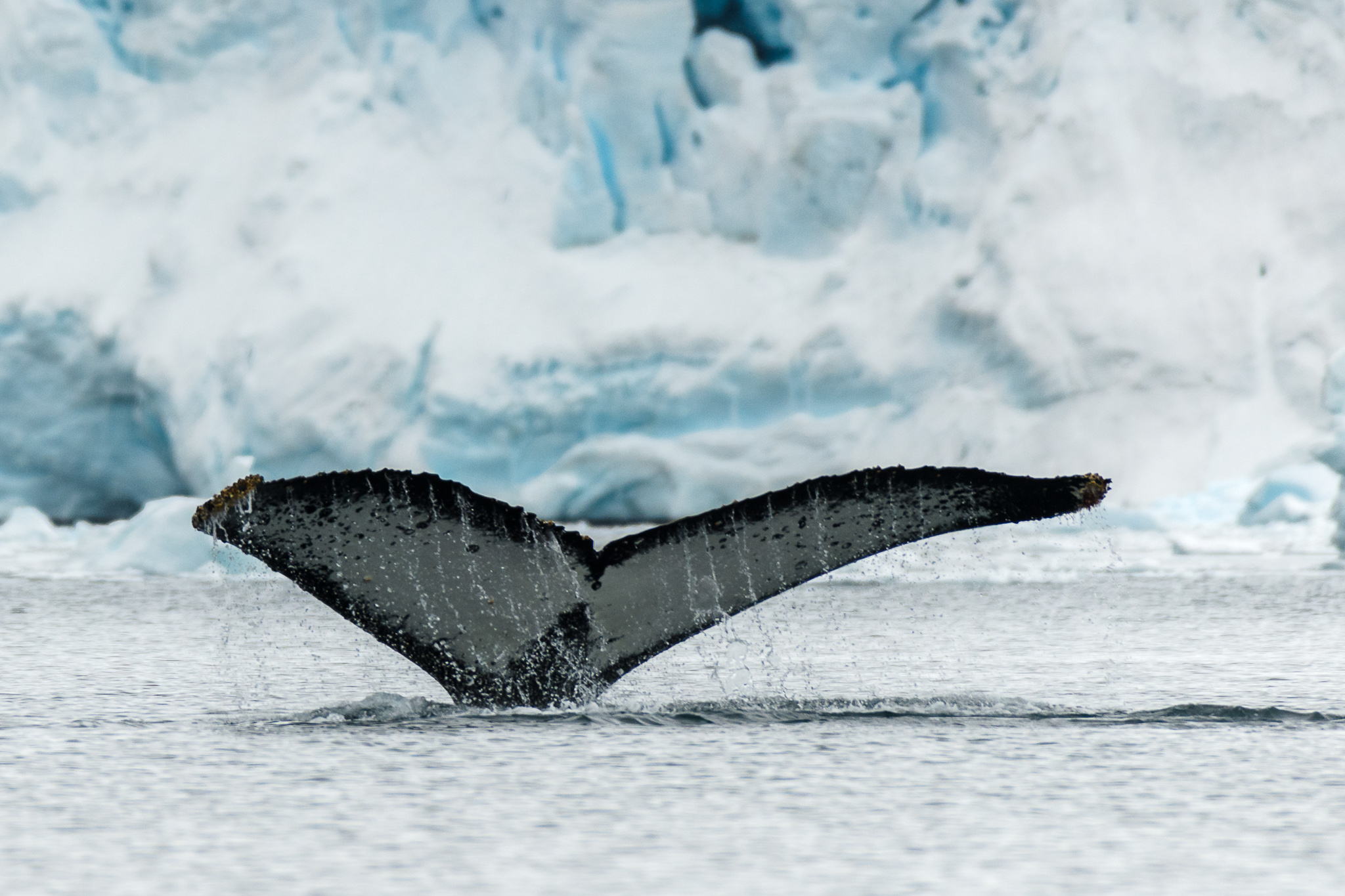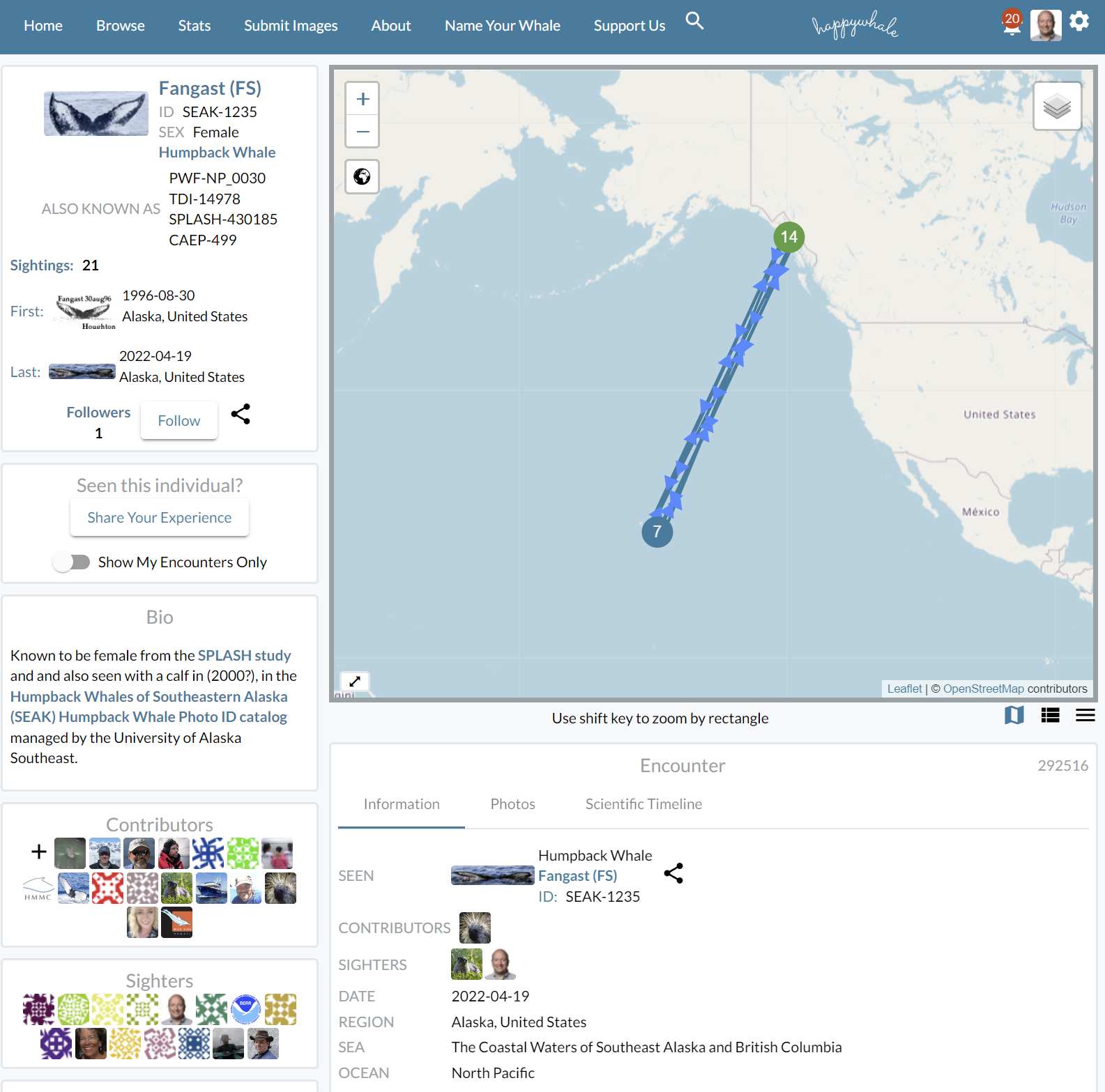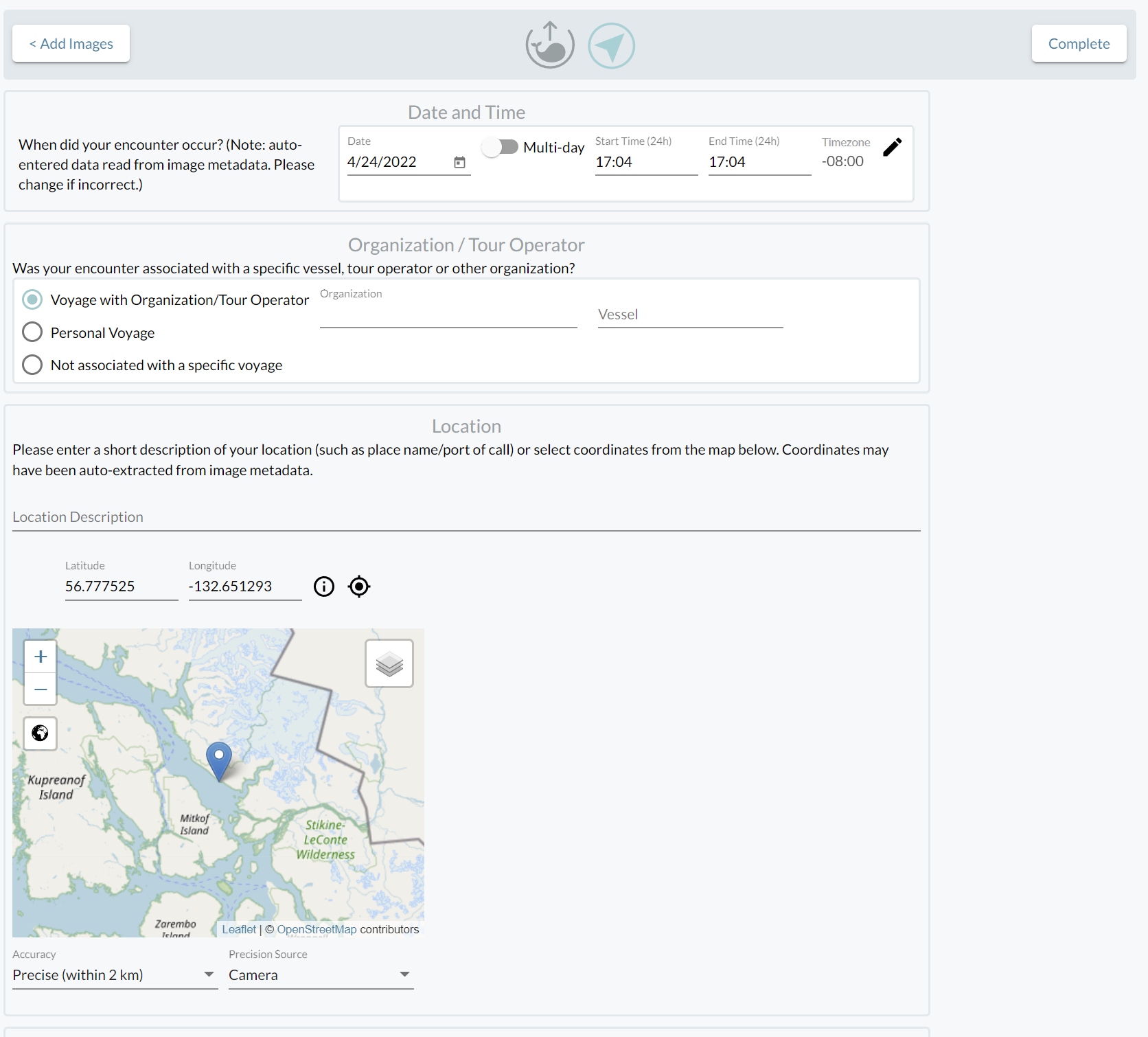
I love photographing whales. Whether you are on a photo workshop in Alaska, Antarctica, or even Newfoundland, there is a good chance you’ll encounter whales. A fun thing to do with your whale photographs is to contribute to Happywhale, a citizen science project that identifies and tracks individual whales around the globe using your pictures.
When photographing whales, you hope for epic breaches, bubble-net feeding, or whales placed in a dramatic landscape. You also come home with hundreds of images of dorsal fins, blowholes, and flukes. Happywhale image recognition algorithms can use those photos to identify individuals by pigment patterns, scars, or the shape of their fins and flukes.
If Happywhale identifies your whale, it will show you where and when it has been seen, showing its migration patterns based on photos from other contributors. If a whale is unknown, it gets added to their database of whales. Even more fun, you can continue to get notifications when your whale is spotted again. It’s like a social media platform for your favorite whales!

Knowing the history and migration patterns of the whale you just saw makes whale watching more fun. I found my whales’ names and other sightings from a recent trip to Southeast Alaska. I also learned that some of my whales migrate to Hawaii while others go to Baja California.
Whales live a long time, so you can even dig into your archive of photos from years past. You may be surprised to identify recent sightings of a whale you saw years ago.
How Happywhale works
To contribute whale photos to Happywhale, first, you must create an account with your name and email address identifying you as the contributor.
If you are on a whale-watching trip, ask your captain if they participate in Happywhale and if they have set up a voyage. Your findings are associated with others on your boat by including your voyage.
Most submissions are humpback whales, and the best way to identify humpbacks is to submit a photo of the underside of their tail when they dive. The shape of the trailing edge of their fluke and its pigment patterns are distinctive, like a human fingerprint. Other whale species are best identified with a photo showing the shape and pigment of their dorsal fin. Read the guidelines for Happywhale submissions to get the best results.
On your camera, ensure your date and time are set correctly to the local time. It is also helpful to geotag your photos with GPS coordinates. Some cameras can do this automatically, while others can retrieve GPS location from your smartphone when shooting. You can also use GPS tracking apps or devices and sync GPS coordinates in Lightroom.
Once you’ve cropped your photo to the whale tail or dorsal fin, submitting an image is easy. Happywhale retrieves the capture time and date from the picture, which you can tweak if needed. Then, you identify the whale-watching vessel you were on. You can also describe your location and briefly describe your whale encounter.

After submitting a photo, it takes a few days to match and review the image. You’ll receive email notifications telling you they have identified your whale with its name or ID. (You can name your whale by making contributions to whale conservation.) You also receive periodic email notifications when your whale has been spotted again.
Contribute to the science of whales
Identifying and understanding migratory whale behavior is a relatively new science, as many whales didn’t survive human interactions during whaling times. With the prevalence of whale-watching tours and digital photography, regular citizens can now contribute to whale science at a scale impossible for researchers to do independently.
The amount of data that Happywhale has amassed is impressive, with over 43,000 individual whales known globally. Over 90% of individuals have been identified in some areas of North America. Whale researchers can use this treasure trove of data to help understand our oceans and improve conservation efforts.
If you are a photographer who wants to contribute to the science of whales, I encourage you to try out Happywhale.
